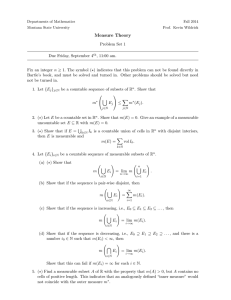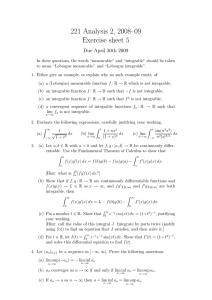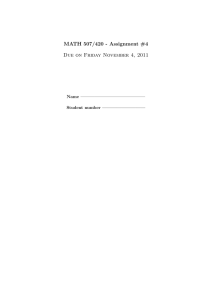18.102: PROBLEMS FOR TEST1 – 11 OCTOBER, 2007
advertisement
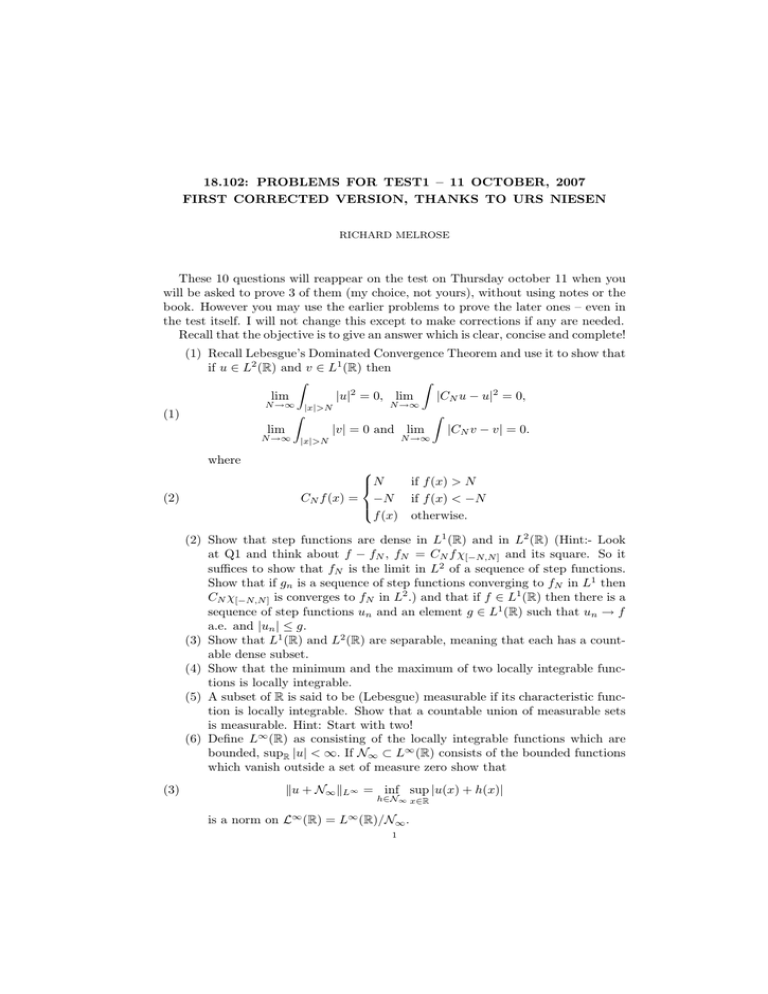
18.102: PROBLEMS FOR TEST1 – 11 OCTOBER, 2007
FIRST CORRECTED VERSION, THANKS TO URS NIESEN
RICHARD MELROSE
These 10 questions will reappear on the test on Thursday october 11 when you
will be asked to prove 3 of them (my choice, not yours), without using notes or the
book. However you may use the earlier problems to prove the later ones – even in
the test itself. I will not change this except to make corrections if any are needed.
Recall that the objective is to give an answer which is clear, concise and complete!
(1) Recall Lebesgue’s Dominated Convergence Theorem and use it to show that
if u ∈ L2 (R) and v ∈ L1 (R) then
Z
Z
lim
|u|2 = 0, lim
|CN u − u|2 = 0,
N →∞ |x|>N
N →∞
Z
Z
(1)
lim
|v| = 0 and lim
|CN v − v| = 0.
N →∞
N →∞
|x|>N
where
(2)
if f (x) > N
N
CN f (x) = −N if f (x) < −N
f (x) otherwise.
(2) Show that step functions are dense in L1 (R) and in L2 (R) (Hint:- Look
at Q1 and think about f − fN , fN = CN f χ[−N,N ] and its square. So it
suffices to show that fN is the limit in L2 of a sequence of step functions.
Show that if gn is a sequence of step functions converging to fN in L1 then
CN χ[−N,N ] is converges to fN in L2 .) and that if f ∈ L1 (R) then there is a
sequence of step functions un and an element g ∈ L1 (R) such that un → f
a.e. and |un | ≤ g.
(3) Show that L1 (R) and L2 (R) are separable, meaning that each has a countable dense subset.
(4) Show that the minimum and the maximum of two locally integrable functions is locally integrable.
(5) A subset of R is said to be (Lebesgue) measurable if its characteristic function is locally integrable. Show that a countable union of measurable sets
is measurable. Hint: Start with two!
(6) Define L∞ (R) as consisting of the locally integrable functions which are
bounded, supR |u| < ∞. If N∞ ⊂ L∞ (R) consists of the bounded functions
which vanish outside a set of measure zero show that
(3)
ku + N∞ kL∞ = inf sup |u(x) + h(x)|
h∈N∞ x∈R
is a norm on L∞ (R) = L∞ (R)/N∞ .
1
2
RICHARD MELROSE
(7) Show that if u ∈ L∞ (R) and v ∈ L1 (R) then uv ∈ L1 (R) and that
Z
(4)
| uv| ≤ kukL∞ kvkL1 .
(8) Show that each u ∈ L2 (R) is continuous in the mean in the sense that
Tz u(x) = u(x − z) ∈ L2 (R) for all z ∈ R and that
Z
|Tz u − u|2 = 0.
(5)
lim
|z|→0
(9) If {uj } is a Cauchy sequence in L2 (R) show that both (5) and (1) are
uniform in j, so given > 0 there exists δ > 0 such that
Z
Z
(6)
|Tz uj − uj |2 < ,
|uj |2 < ∀ |z| < δ and all j.
|x|>1/δ
(10) Construct a sequence in L2 (R) for which the uniformity in (6) does not
hold.
Department of Mathematics, Massachusetts Institute of Technology
E-mail address: rbm@math.mit.edu
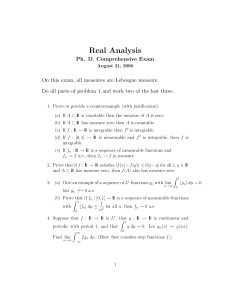
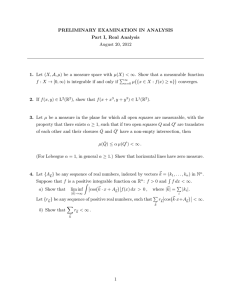
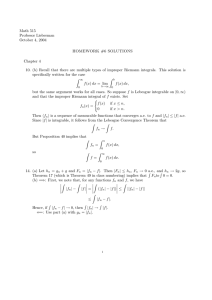

![SOLUTION OF HW8 October 29, 2012 ∈ [a, b] and f (x](http://s2.studylib.net/store/data/011168958_1-442ca4aa8a6a38cd3cd234eafdc711b6-300x300.png)

